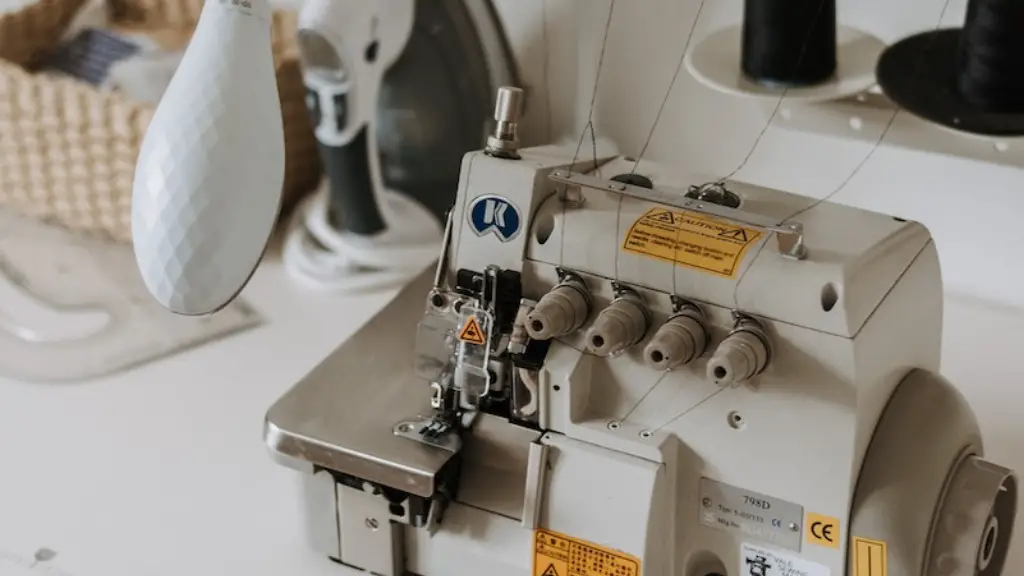Introduction
Sewing machines are a necessary tool for many kinds of projects and are a great way to express your creativity through fabric. They come in different shapes and sizes and can be used for garments, embroidery, quilting, and other fabric-based projects. With such a wide range of uses, it’s important to find one that is right for your needs and that can be relied on for the long-term. But how long should a sewing machine last? This article will explore this question and provide some insights into determining the lifespan of a sewing machine, as well as some tips for taking care of your machine and ensuring it lasts as long as possible.
Factors Affecting Sewing Machine Lifespan
The life span of a sewing machine depends on several factors. Quality is key – higher-priced machines are usually constructed with better materials, resulting in longer life spans. Frequency of use is also an important factor – a machine that’s used often will wear out faster than a machine that is used more sparingly. How a machine is cared for can also have an impact on its lifespan – regular cleaning and maintenance will help keep it in good working order for longer. Additionally, how a machine is stored and transported can play a role in how long it will last – it’s important to take extra care when packing and transporting to make sure it is not damaged in transit.
Expert Advice on Sewing Machine Lifespan
According to experts, a quality sewing machine can last around 15-20 years with regular maintenance and care. However, cheaper models may have a shorter lifespan of around 8-10 years. It’s important to consider not just the initial purchase price, but also the up-front and ongoing expenses, such as maintenance costs in order to determine the true cost of ownership.
It’s also important to consider the type and brand of the machine. Some brands are known for their durability, while other are more affordable but may also have a shorter lifespan. Additionally, the type of sewing machine should be taken into consideration. Generally, mechanical machines last longer than electronic ones, as there are fewer moving parts that can break.
Simple Tips For Longer Sewing Machine Life
Regardless of the type and quality of your sewing machine, there are some simple tips you can follow to make sure your machine lasts as long as possible.
Firstly, it’s important to properly clean and lubricate the machine after each use. Removing excess thread and lint, oiling the different parts of the machine, and gently wiping down the surface areas can help maintain the machine and protect it from wear and tear. Additionally, it’s important to use only recommended parts and accessories – using the wrong parts can cause damage and shorten the life of your machine.
You should also try to avoid carrying the machine in and out of your workspace too often. Setting up the machine in an area that won’t be disturbed too much can significantly extend its life, as frequent movement can damage internal parts and reduce its longevity.
Hooping and Professional Maintenance
It is also important to consider hooping, which is when the fabric is held tightly to the machine for sewing, as excessive hooping can break down parts of the machine faster. This can be done through professional maintenance, which can be done at your local sewing store or online. Additionally, when professional maintenance is needed, it is important to find a qualified and experienced technician to carry out the necessary repairs or maintenance.
Modern Sewing Machines vs Vintage Machines
Modern sewing machines are usually made out of lightweight plastic with fewer movable parts, resulting in longer life expectancies. On the other hand, vintage sewing machines are made out of heavier, stronger parts and have a higher life expectancy of around 25-30 years.
Advances in Technology and Sewing Machines
As technology advances, so do our sewing machines. Modern electronic machines are faster and often more reliable, and can also be used wirelessly and connected to computers, tablets and phones. Additionally, many modern machines come with extra features such as built-in stitches and automatic adjustments, making them easier and more convenient to use.
Cost Efficiency and Sewing Machines
When it comes to cost efficiency, it is important to choose a machine that suits your sewing needs. Investing in a higher quality machine may be more expensive initially, but it will usually last longer and require fewer repairs, resulting in long-term cost savings. Additionally, investing in a quality machine can make a big difference in the quality of the finished product.
Considerations and Maintenance of Sewing Machines
When considering the lifespan of a sewing machine, it is important to take into account the type and quality of the machine, as well as how it is cared for. Regular cleaning and maintenance will help ensure that your machine lasts as long as possible, and investing in higher quality machines will help make sure you get the most out of your purchase. Finally, advances in technology can help make sewing easier and more efficient, allowing you to get the most out of your machine.


